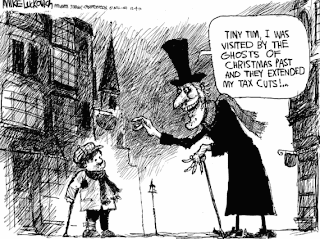In our working lives we exchange our time and energy for money. We then use our money to support our lifestyle, which includes covering the costs associated with maintaining our income. If our lifestyle costs adds up to more than our income, we can choose to take on debt—if we can find a lender, or we can change our lifestyle.
For most people, taking on debt (sometimes known as using credit) used to be the preferred method. Now it’s both harder to do and less attractive for long-term prosperity. This leaves us with lifestyle choices.
In the higher socio-economic levels, making lifestyle changes is easier: renting movies at home versus going to the movie theater; camping for vacation rather than flying to a beach resort; eating dinner at home instead of at a restaurant.
For people living with a poverty level income, the ability to make lifestyle changes that have an economic impact is more difficult. The decisions are more along the lines of buying groceries versus buying gas to get to work; buying shoes that fit for your youngest child versus a warm coat for your eldest.
How does your income affect your own financial decision making process? Do you think about each purchase or do you spend more or less freely without thought? As a VISTA, my $900 month pre-tax stipend affects my financial decision making more than my previous variable income levels ever have. Here’s an example:
This week my coworkers had a farewell lunch for our VISTA colleague Kevin, my predecessor, at a wonderful local restaurant. The restaurant is one of my favorites and it was even my suggestion to go there (just so you know in advance that there’s no resentment).
A day or two afterward, while thinking about my Christmas budget, how much gas would cost for the nine-hour drive to my hometown next week, and how much I could afford to spend on groceries in between now and then, I remembered a concept I learned from the book Your Money or Your Life by Joe Dominguez and Vicki Robin.
My really basic interpretation of one of the book’s nine steps to financial independence is to evaluate expenditures by the satisfaction value they provide for the number of hours worked to attain them. (There’s more to this than dollars earned per hours worked. For the calculation process, check out the book from your library or buy a copy.)
At my current income, that fabulous lunch cost about three hours of work. (It was worth it.) Is it something I can do every day? Absolutely not. Every week? Certainly not. Every month? Maybe, but probably not. More like once every three months. However, the $1 menu at the hamburger place down the block, I can most likely afford every day, if I want to. Such is life. It will help me appreciate the times I do visit my favorite "luxury' places.
As my VISTA year progresses, I may seem to walk around with dollar signs in my eyes. It’s not that I am money-hungry. It’s that I’ll be calculating the satisfaction value I’ll receive, in highly personal terms, of each expenditure I make. I'll decide yes or no based on my state of well-being, the amount of cash in my pocket, and the amount of energy I have at the time.
The good news is that a smile is always free, but has infinite value, and is easily exchanged. Over the year, I might be tired or hungry and not feel like smiling, but I’ll appreciate it when you do, and will probably smile back. If I don't, don't worry, it's not personal.
 To ring in 2011, the Pokagon Band will offer a family-friendly, drug- and alcohol-free evening of Native music and laughter at Dowagiac Middle School’s Performing Arts Center, 57072 Riverside Drive.
To ring in 2011, the Pokagon Band will offer a family-friendly, drug- and alcohol-free evening of Native music and laughter at Dowagiac Middle School’s Performing Arts Center, 57072 Riverside Drive.
















